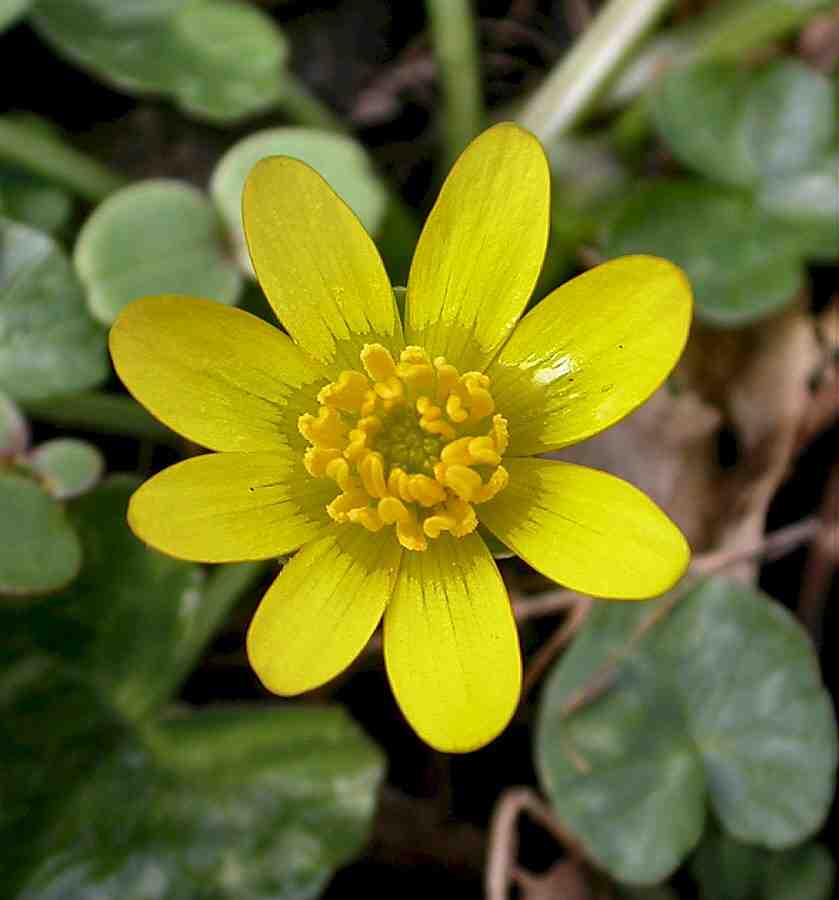
LESSER CELANDINE |
RANUNCULUS FICARIA |
 |
| Fig 1 |
DESCRIPTION: Height up to 25cm tall. A common, creeping
perennial that forms extensive carpets providing the conditions are
right. The stalked glossy green leaves are heart-shaped and
usually have a few faded patches on the upper surface. They form a
rosette from which arises long flowering stem on the end of which is
found the 8 to 12 glossy yellow petals of the flower. There are
3 yellow-green sepals. DISTRIBUTION: Widespread throughout. HABITAT: Woodland, hedgerows, riverbanks and damp
grassy areas. FLOWERING TIME: March to May. FURTHER INFO: Celandine comes from the Latin 'cheilidonia' which literally means swallow. It was said that the flowers were first seen when the Swallows returned and duly faded when they left. Ranunculus means 'little frog' hence 'Rana' - 'Frog' with a diminutive ending - 'culus'. It is quite pertinent that frogs like water and this species is fond of damp areas in which to grow. 'Ficaria' is Latin for ‘fig’ giving the plant another name of 'Fig Buttercup', the name based on the fact that the tubers resemble a bunch of figs. 'Brazen Hussy' is a name occasionally used by horticulturists although surely this delightful plant is worthy of a more delicate title. An alternative name is 'Pilewort', founded by the belief that the knobbly tubers of this plant are similar in appearance to a gathering of piles (haemorrhoids). 'Spring Messenger' is also another local name due to it being one of the earliest flowering species and heralding the onset of a new season. Lesser Celandine is high in vitamin C and has been used to prevent scurvy. |